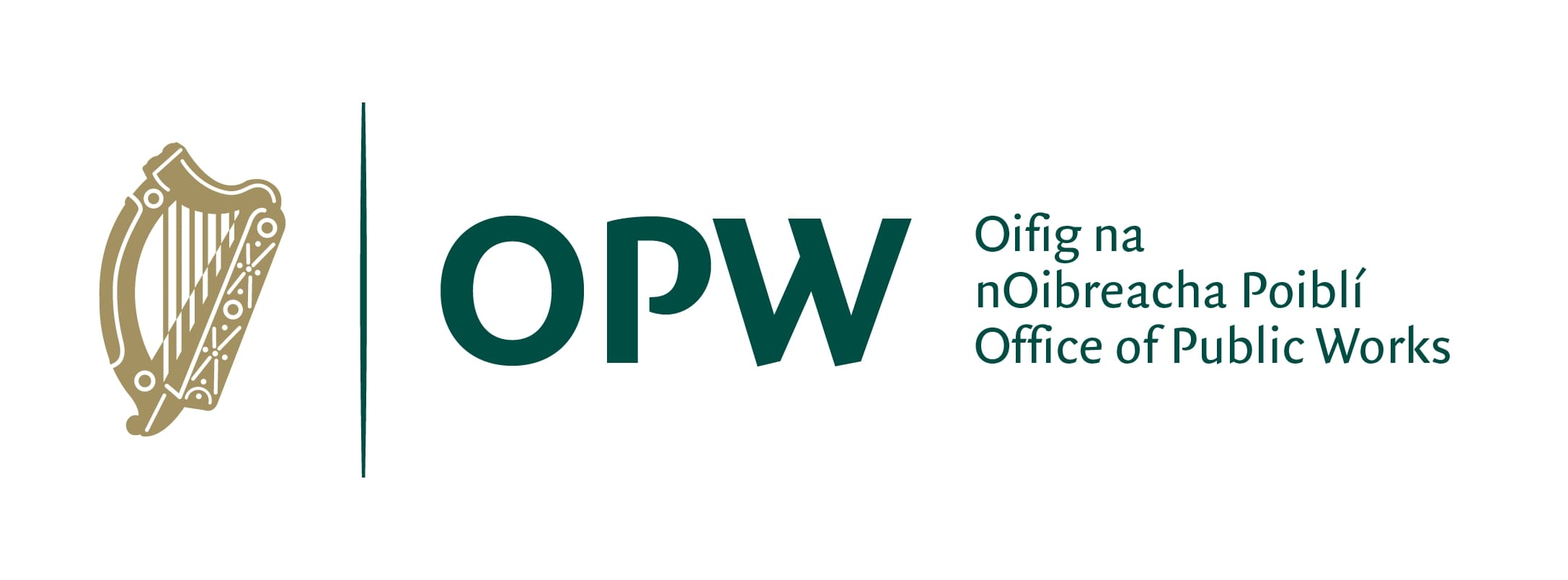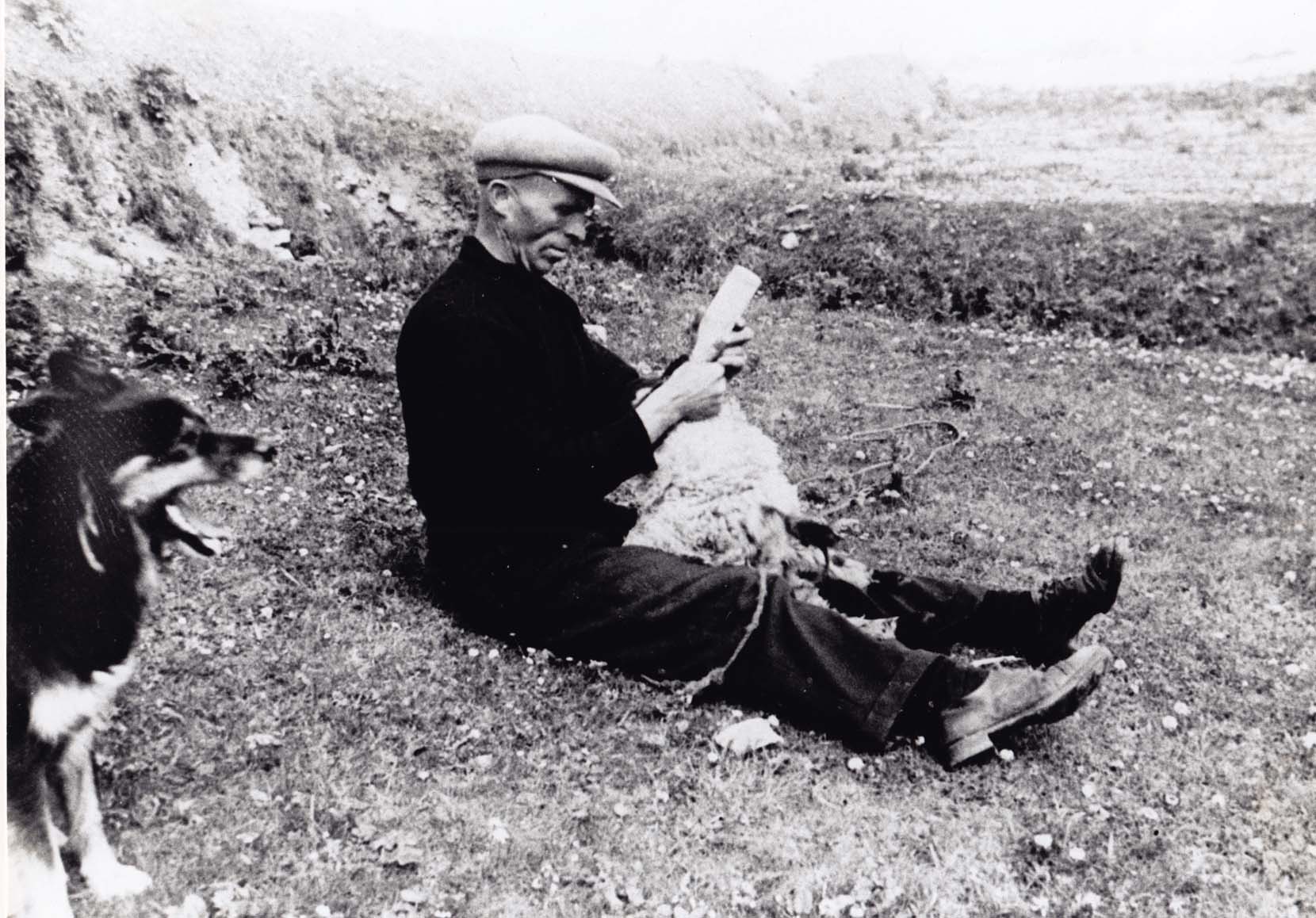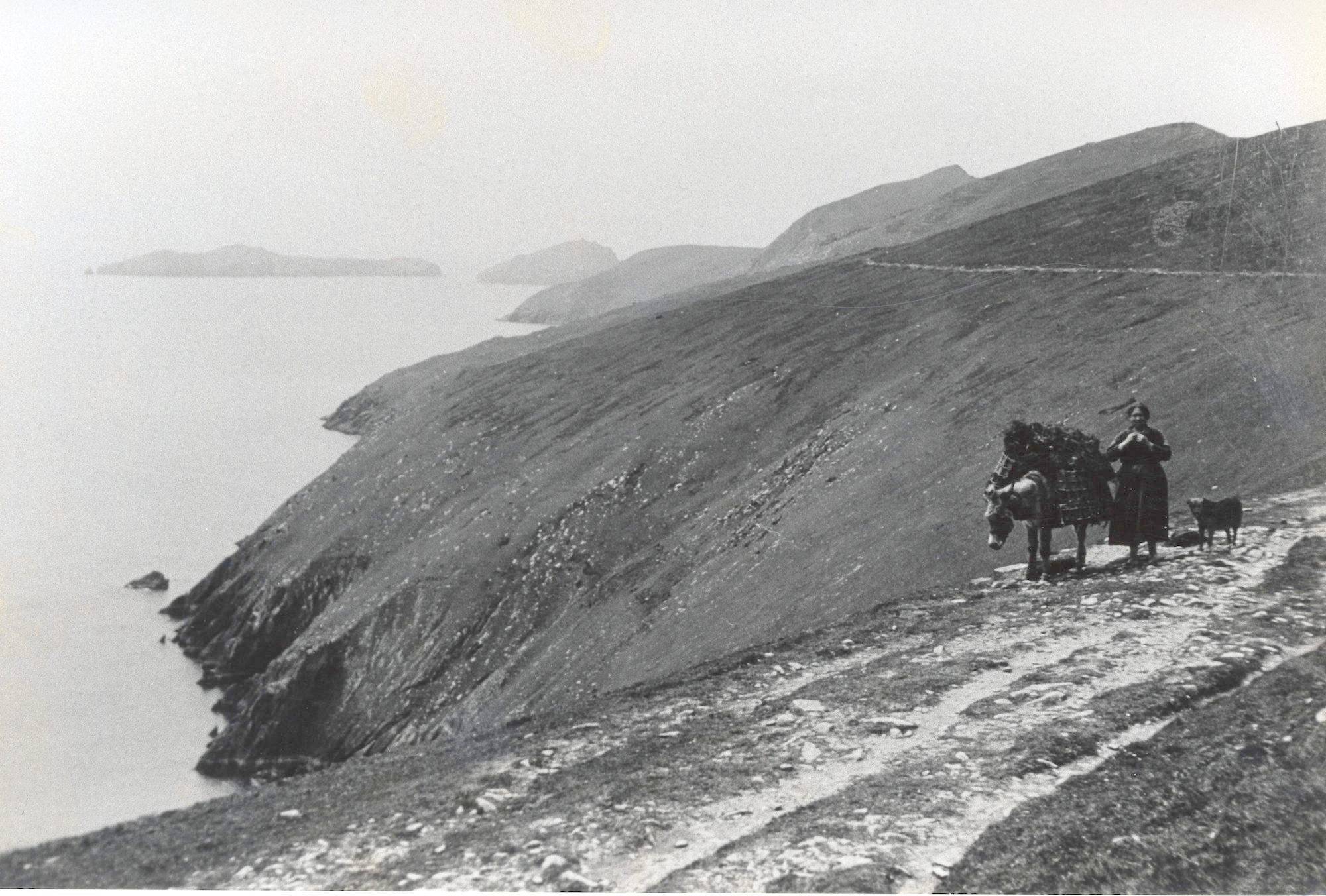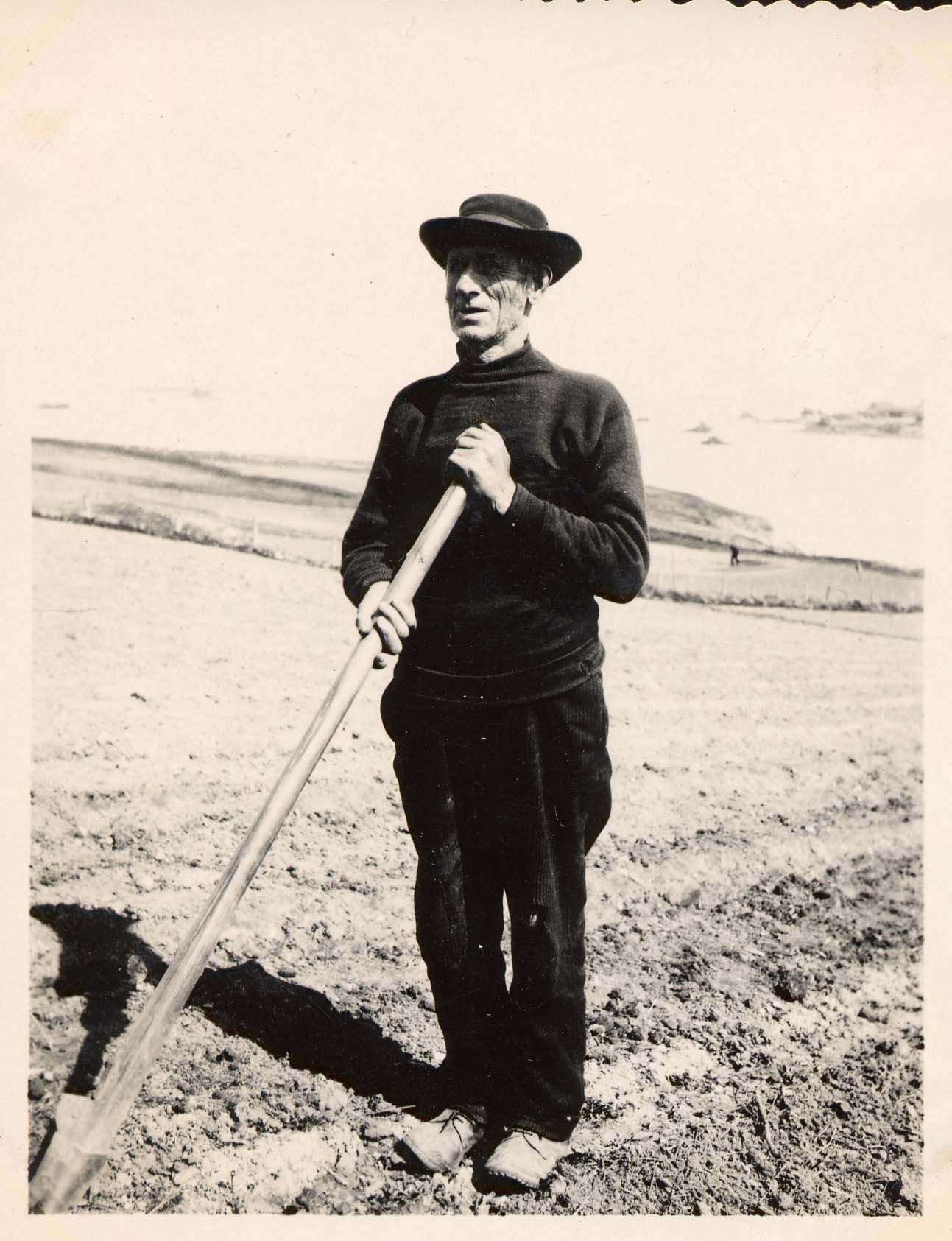Life on the Land
For many years milk and milk products were a vital part of the island economy. Much of the daily and seasonal work centred around the tending of milch cows and cattle. ‘Booleying’, where the cattle were taken to higher pastures in early May and returned to the village in late autumn, was an important seasonal activity managed usually by younger women. The unfenced land close to the village was thus left free for cultivation. With diversification into fishing, and greater concentration on sheep, cattle declined in importance. The saying ‘one sheep for wool, a second for food, and a third for the market’ reflects the value of sheep to the Islanders.
Poultry were kept in and around the house, and rabbits and certain birds were hunted on the Great Blasket and neighbouring islands. Oats and potatoes were the main crops, grown mostly for home consumption. Vegetables such as cabbage, turnips and, later, carrots were introduced from the middle of the last century onwards.
A well-constructed road runs approximately a third of the way back along the island. It dates from about 1810 when the island watch tower was built. The vast bulk of the Island’s one thousand acres is suitable for rough grazing only.
Heather was an important source of fuel for the Islanders. Men, women and children spent many hours gathering heather on the hillside during spring and summer. Peig Sayers’ son, Tomás, died in April 1920 while pulling heather on one of the many precipitous slopes on the island.
The Great Blasket was virtually stripped bare of peat by the time the island was abandoned. The island has just a thin covering of bog from which one or, at most, two sods of ‘black’ turf could be cut. Peat was mostly burnt in winter and turf (‘stuaicín’) during the summer months, or when ‘black turf’ was scarce. Stuaicín is a kind of scraw, or top-sod, cut from the bog. Black peat produces more heat but stuaicín burns longer and was used for baking. Once dried, peat and turf were stored in stone shelters. Remains of these low rectangular shelters dot the hillside on the island adjacent to the areas where peat and turf was cut.
The spade used by Islanders is of a type common throughout Kerry, and is suited to cultivation on ridges. Along the west coast of Ireland the roots of crops must be kept above the water table due to the heavy rainfall. Thus the potato was cultivated on high ridges or ‘lazy beds’. The spade had a narrow blade which widens at the end. The blade’s curved profile gave greater leverage power. It was ‘stepped’ on one side only, unlike the twin-stepped English garden spade which had begun to steadily replace it from the end of the twentieth century.
Beehive-shaped huts, made of stone and common throughout the western end of the Corca Dhuibhne peninsula – were used as outbuildings in which to store corn, or to segregate animals. At one time there were two such huts in the Island village. The gravel strand at Tráigh Ghearaí, at the extreme north-western end of the Island, was traditionally the spot where sheep were shorn. The strand, surrounded by steep cliffs, provided a natural pen for such work.
Horses were kept on the Island at one time, as place-names testify. Island folk history records that horses were once used to draw a wooden plough. But from the early nineteenth century, in common with the mainland, the donkey replaced the horse as the beast of burden, and spade cultivation replaced the plough completely.




